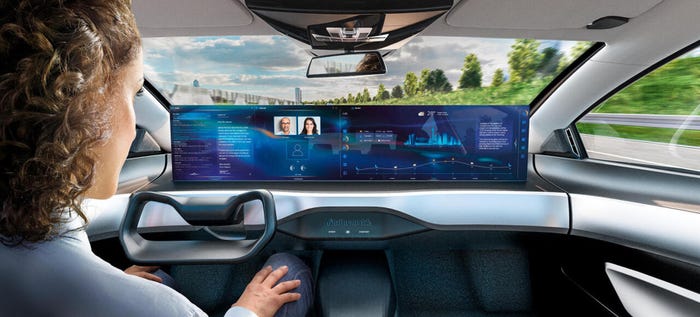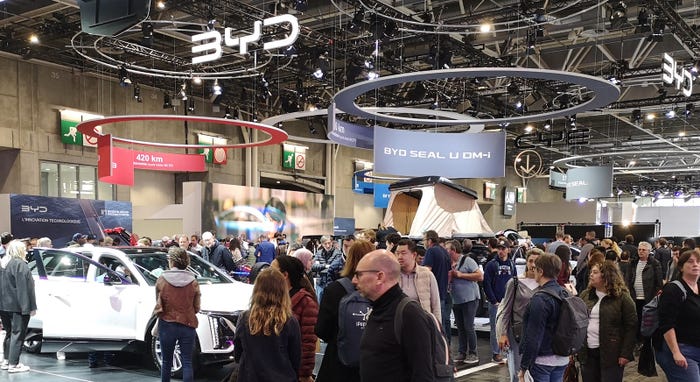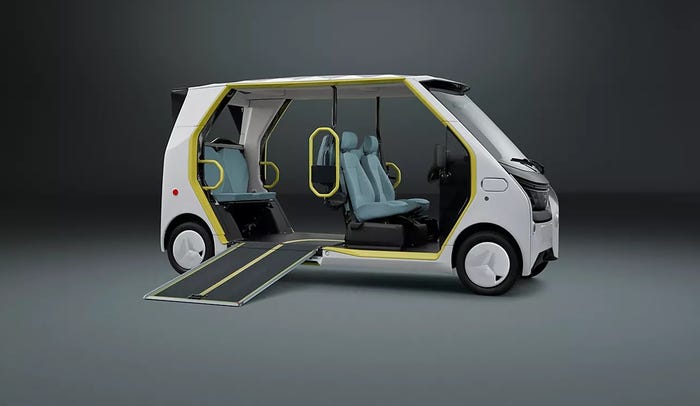Mitsubishi Determined to Stay in U.S.
The Japanese auto maker begins rolling out new product in hopes of regaining lost ground.

REDMOND, OR – Mitsubishi is determined to stay in America, will gradually expand its lineup and has learned a lesson or two from a cool U.S. market response to its small electric car, a company executive says.
With fellow Japanese auto maker Suzuki closing down its U.S. sales unit, many industry observers have predicted Mitsubishi will leave, too. They say that’s because the two share similarities of being small players with falling sales.
But Mitsubishi has more going for it, enough to stay competitive in the U.S., says Masatoshi Hasegawa, Mitsubishi Motors North America’s executive vice president-corporate planning.
“We have no plans to leave the U.S.,” he tells WardsAuto. “Our goal is to increase sales and market share, but it is hard right now because we are in a time of transition.”
Mitsubishi has trimmed its lineup, dropping the Galant sedan, Eclipse coupe and Endeavor midsize cross/utility vehicle. That leaves the Outlander midsize CUV, a smaller Outlander Sport, three versions of the Lancer small car and the i-MIEV, a small electric vehicle.
But the No.6 Japanese auto maker now is adding to its lineup. That is good news to the brand’s 373 U.S. dealers. “There is going to be more product to replace the cars that we lost,” Robert Hill, owner of R.C. Hill Mitsubishi in Deland, FL, says during a recent interview.
Mitsubishi debuts a new-generation Outlander midsize CUV here. A plug-in hybrid electric version is due out in a year. The wraps come off an all-new Mirage subcompact at the New York auto show this month.
Regaining lost ground, “needs to be done step by step,” Hasegawa says. “We’re slowly getting there. The new Outlander is a first step.”
He describes the ’14 model as more upscale than its predecessor. “That is what the market wants.” The vehicle goes on sale in June. Pricing is pending, but executives hint it could run less than the outgoing model, while offering more content.
Mitsubishi had high hopes for the i-MIEV, but sales of the tiny electric car have been disappointing, with only 594 deliveries this year through February. In contrast, Nissan sold nearly three times as many of its larger Leaf EV. At the Geneva auto show this month, Mitsubishi unveiled a concept EV with next-generation technology and extended driving range.
“Maybe the next i will be the size of the Leaf, but you can’t get too big with an EV, or you have low-range issues,” Hasegawa says. “You’ve got to be realistic about that.”
The i has done better in Japan. But America’s vast geography lacks an adequate nationwide EV recharging infrastructure, Hasegawa says, noting that some midsize states are larger than Japan.
“We think there’s a market in the U.S. but it’s just not growing like in Japan,” he says of EV sales. “We’re not giving up here, but it is going to take time. That’s a lesson we learned.”
Dealer Hill says talk of Mitsubishi pulling out of the U.S. “needs to stop.”
Mitsubishi sold 57,790 light vehicles in the U.S. last year compared with 79,020 in 2011, according to WardsAuto data. The downsizing of the lineup had something to do with that decrease.
Asian brands overall were up 18.2%, accounting for 6.6 million unit sales in the U.S. last year. Besides Mitsubishi, the only other Asian brand with fewer sales in 2012 compared with 2011 was Suzuki, off 4.7%. Mitsubishi was down 26.9%.
But the two auto makers are different in fundamental ways, Bryan Arnett, MMNA’s senior manager-product strategy, tells WardsAuto.
“We don’t see the comparison between Suzuki and Mitsubishi when it comes to our future in the U.S.,” he says. “We have robust (corporate) support and backing from the Bank of Tokyo. We have a plant here. We have no intent to leave the U.S. or to fail in this market.
“We’re not a Toyota or Honda,” Arnett says, referring to the top Japanese auto makers. “But we make quality vehicles that American buyers are happy with. We just need to get the word out.”
Auto analyst George Peterson, president of AutoPacific, cites Mitsubishi-Suzuki comparisons and contrasts.
“They are very different companies, but it is not unfair to compare them in some ways,” he tells WardsAuto. “One thing Suzuki could not do is devote the amount of financial and physical resources to keep up with American regulations. It just couldn’t afford to stay. There are many other markets less onerous and less viciously competitive where they can make money.”
Mitsubishi’s U.S. unit has a huge corporation behind it, Peterson says. “Mitsubishi Motors Corp. is funding product plans, probably not as much as (MMNA) wants, but the new Outlander is a substantial improvement over its predecessor.”
Yet he sees gaps in the Mitsubishi lineup. “I’d love to see them bring back a softer version of the Montero (SUV) to give them more credibility and presence in the huge cross/utility market here. Right now, they are playing in the middle and bottom segments. I’d like to see them go up to a real 7-passenger CUV.
“And you really can’t be successful in the U.S. without a competitive midsize car, something that gives someone coming out of the Lancer a bigger car to go into, and still stay within the brand.”
About the Author
You May Also Like



.jpg?width=700&auto=webp&quality=80&disable=upscale)

